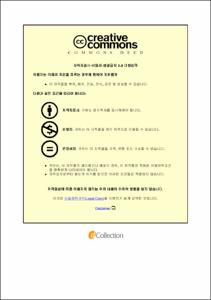동 슬래그와 자철석을 잔골재로 사용한 수중불분리성 자기다짐 중량 콘크리트 배합표준의 제시
- Alternative Title
- Development of Standard Mix Proportions for Anti-Washout Self-Compacting Heavyweight Concrete Using Copper Slag and Magnetite as Fine Aggregates
- Abstract
- Due to the geographic nature of Republic of Korea, the importance on the development of maritime and coastal infrastructure has become significantly increasing. Since concrete exposed to coastal and offshore area experiences harsher conditions than that on the inland, many performance criteria are required to secure proper functionality of concrete in maritime environment. For example, the gravity-type breakwater structure, represented by tetrapod, is often separated or lost by a large typhoon every year. Turning wave block, which provides much better scenery than tetrapod, has been developed to reduce tidal energy by changing the direction of wave to collide with next one. However, turning wave block has large amount of void spaces, so heavyweight concrete structure is required to provide necessary stability. In order to resolve such problems, the main objective of this work was set to develop an anti-washout self-compacting heavyweight concrete. Anti-washout and self-compacting properties were required for underwater construction as well as for proper compaction of turning wave block that has tortuous design. Since the copper slag was found to be physically and chemically stable source of aggregate, it was used as a fine heavyweight aggregate together with magnetite. It was found that chloride ion penetration of such concrete was not significantly affected by the replacement of natural aggregates by heavyweight aggregates. The use of blast furnace slag reduced the chloride ion diffusivity, but increased maximum temperature rise similar to that of plain concrete, although time to leach at maximum temperature was delayed. Fiber reinforcement and the use of heavyweight coarse aggregates caused separation of cement particles during underwater construction, so those ingredients cannot be used to make an anti-washout self-compacting heavyweight aggregate. Using blast furnace slag, magnetite, and copper slag, a concrete with the unit weight higher than 2.7 ton/m3 and with an underwater slump flow higher than 600 mm was able to be produced. Based on experimental results, the standard mix proportions of anti-washout self-compacting heavyweight concrete are suggested as; 1) 40% replacement of blast furnace slag with portland cement, 2) the size of magnetite to be less than 1.2 mm and that of copper slag to be ranged between 1.2 and 5.0 mm, 3) use of crushed stone with a maximum size of 20 mm as a coarse aggregate to maintain anti-washout property, and 4) the optimum amount of anti-washout admixture (viscosity modifying agent) and superplasticizer to be controlled at around 0.55% and 4%, respectively.
- Issued Date
- 2021
- Awarded Date
- 2021. 2
- Type
- Dissertation
- Keyword
- 수중불분리 콘크리트 중량 콘크리트 동 슬래그 자철석
- Publisher
- 부경대학교
- Alternative Author(s)
- Moon, Hoon
- Affiliation
- 부경대학교 대학원
- Department
- 대학원 건축공학과
- Advisor
- 정철우
- Table Of Contents
- Ⅰ. 서 론 1
1.1 연구의 배경 및 목적 1
1.2 연구의 방법 및 범위 3
Ⅱ. 이론적 고찰 5
2.1 수중불분리 콘크리트 5
2.2 중량 콘크리트 8
2.3 매스 콘크리트 수화열 제어 10
2.4 산업부산물 중량골재 14
2.4.1 동 슬래그 16
2.4.2 제강 슬래그 18
2.4.3 서냉 고로 슬래그 22
Ⅲ. 산업부산물 슬래그의 중량골재 활용성 평가 24
3.1 개요 24
3.2 실험 방법 25
3.2.1 물리·화학적 성분분석 25
3.2.2 산업부산물의 화학적 안정성 평가방법 33
3.3 실험 결과 36
3.3.1 동 슬래그 36
3.3.2 제강 슬래그 37
3.4 고 찰 41
3.5 소 결 43
Ⅳ. 산업부산물 골재를 사용한 콘크리트의 염해저항성 평가 44
4.1 개요 44
4.2 실험 방법 45
4.2.1 사용 재료 45
4.2.2 콘크리트 배합설계 50
4.2.3 재령 28일 압축강도 52
4.2.4 염해저항성 평가 방법 52
4.3 실험 결과 57
4.3.1 재령 28일 압축강도 57
4.3.2 염해저항성 59
4.4 고 찰 65
4.5 소 결 67
Ⅴ. 혼화재를 치환한 콘크리트의 수화열 특성 68
5.1 개요 68
5.2 실험 방법 70
5.2.1 혼화재의 특성 70
5.2.2 콘크리트 및 시멘트 페이스트 배합설계 75
5.2.3 콘크리트 수화온도 측정 방법 77
5.2.4 시멘트 페이스트의 등온열량 분석 78
5.2.5 시멘트 페이스트의 열중량 분석 79
5.2.6 콘크리트 압축강도 측정 79
5.3 실험 결과 80
5.3.1 단열온도 상승 시험 80
5.3.2 준 단열온도 상승 시험 83
5.3.3 시멘트 페이스트의 수화반응 특성 86
5.3.4 열중량 분석 95
5.3.5 재령 28일 압축강도 97
5.4 고 찰 98
5.5 소 결 104
Ⅵ. 중량골재를 혼입한 수중불분리 콘크리트의 물리적 특성 106
6.1 개요 106
6.2 실험 방법 108
6.2.1 사용 재료 108
6.2.2 시멘트 페이스트의 배합 및 점도 측정 109
6.2.3 콘크리트 배합설계 110
6.2.4 수중불분리도 평가방법 113
6.2.5 수중 슬럼프 플로우 및 수중타설 방법 114
6.2.6 염해저항성 및 재령 28일 압축강도 측정 방법 115
6.3 실험 결과 116
6.3.1 수중불분리 시멘트 페이스트의 점도 116
6.3.2 수중불분리 콘크리트의 물성 평가 119
6.3.3 수중불분리성 자기다짐 중량 콘크리트의 물성 평가 129
6.4 고 찰 138
6.5 소 결 140
Ⅶ. 결 론 141
참 고 문 헌 144
- Degree
- Doctor
- Files in This Item:
-
-
Download
 동 슬래그와 자철석을 잔골재로 사용한 수중불분리성 자기다짐 중량 콘크리트 배합표준의 제시.pdf
기타 데이터 / 17.49 MB / Adobe PDF
동 슬래그와 자철석을 잔골재로 사용한 수중불분리성 자기다짐 중량 콘크리트 배합표준의 제시.pdf
기타 데이터 / 17.49 MB / Adobe PDF
-
Items in Repository are protected by copyright, with all rights reserved, unless otherwise indicated.